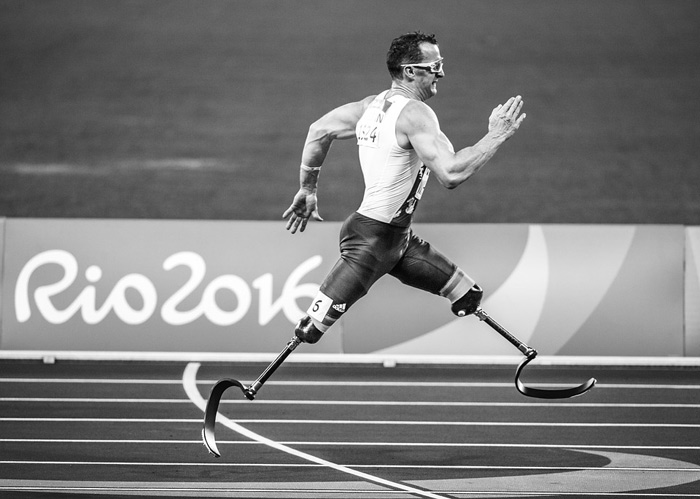The precursor to what we now know as the Paralympic Games was an event organized by Sir Ludwig Guttman in 1948. He organized a competition in Stoke Mandeville, in the United Kingdom, for Second World War veterans with spinal injuries. He believed that sport was good for both morale and rehabilitation. This event was very successful, and by 1960 it had evolved to an Olympic-style Games with participants from all over the world.
 a Paralympic sprinter at the 2016 Rio Paralympics
a Paralympic sprinter at the 2016 Rio ParalympicsThe first official Paralympic Games was held in Rome, Italy, in 1960, and since that time the Paralympic Games have continued to grow in size and stature. The first Games featured 400 athletes from 23 countries competing in eight sports - archery, athletics, dartchery, snooker, swimming, table tennis, wheelchair fencing and wheelchair basketball.
The Paralympic Games has not always been called that. The 1960 event was at the time the 9th International Stoke Mandeville Games. The event was variously called the "Olympiad for the Physically Disabled", "Olympics for the Disabled" and the "International Games for the Disabled", though since 1988 it has been called the "Paralympic Games".
Although there has always been close ties between the Olympics and Paralympics, in 2001 an agreement between the IOC and the International Paralympic Committee (IPC) was reached that ensured that from 2012 onwards the city chosen to host the Olympic Games will also be obliged to host the Paralympics.
The first Winter Paralympic Games (then called the First Winter Olympic Games for the Disabled) were held 16 years after the first Summer Paralympic Games, in Örnsköldsvik in Sweden in 1976. A total of 16 countries took part with 53 athletes, with events for visually impaired athletes and amputees, while there was a demonstration event in ice sledge racing. West Germany won the most medals.
Related Pages
- Demonstration Paralympic Sports
- Discontinued Paralympic Sports
- Paralympics Trivia
- Paralympics Quiz — how well do you know your Paralympics trivia?
- Olympic Games History
- Main Paralympics page


 Upcoming Events
Upcoming Events